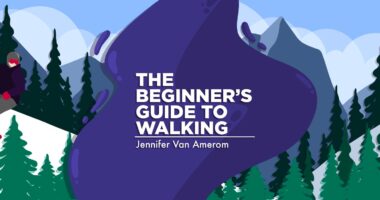Most NMOSD patients report disability, loss of employment: Study
Older patients, those using mobility aids more likely to stop working

A significant proportion of neuromyelitis optica spectrum disorder (NMOSD) patients in the U.S. lost employment, work hours, and wages after their diagnosis, as motor and visual disability and symptoms like pain and fatigue hurt their productivity, a study has found.
Older patients, those using mobility aids, and those experiencing pain or mental health challenges were more likely to have trouble finding or keeping jobs, according to the study “Impact of neuromyelitis optica spectrum disorder on employment and income in the United States,” which was published in the Annals of Clinical and Translational Neurology.
“Illustrating the current living conditions for people living with NMOSD in the USA could shape future strategies for employers, policymakers, and patient-focused foundations, aiming to improve their overall well-being,” the researchers wrote.
NMOSD is a chronic autoimmune disease mainly characterized by inflammation in the spinal cord and optic nerves, which relay information between the eyes and brain. Over time, patients accumulate permanent motor and visual disability that limits their ability to go about everyday life.
This disability, along with other NMOSD symptoms like fatigue, pain, and depression, can substantially limit a person’s ability to find or keep employment.
Most patients surveyed report fatigue
The Boston-based researchers designed the survey to build on group discussions they had held with 20 NMOSD patients who reported difficulties in finding and keeping employment as a result of their disease. The researchers found a need for larger and more quantitative studies to better understand the ramifications of NMOSD on employment.
The latest survey aimed to more systematically characterize the effects of NMOSD on employment, work attendance, and wages among 18- to 70-year-old NMOSD patients in the U.S.
Some 127 patients completed the survey from November 2022 to July 2023. Of these, 76% were women, 69% were Caucasian, 65% were married or in a partnership, and 76% had pursued education beyond high school.
With a mean age at diagnosis of 38.7, patients had been living with NMOSD for an average of 6.4 years and had experienced an average of 3.1 disease attacks. More than half (53%) were on rituximab. An immunosuppressive therapy sold as Rituxan and with biosimilars available, rituximab is commonly used off-label for NMOSD.
Most patients (85%) reported experiencing at least some fatigue, and 51% said it hurt their performance at work. Of the 74% who said they experienced pain, 69% said it affected their ability to work, and 57% said it influenced their decision about whether to work.
NMOSD moderately or severely interfered with daily activities for 56% of the respondents, with 35% saying mental health impacts after diagnosis affected their ability to complete job duties.
Overall, 80% of patients were employed before their diagnosis. The figure dropped to 68% post-diagnosis. More than half (56%) reported losing a job at some point after diagnosis.
Of those who were employed both before and after diagnosis, 68% lost an average of 18.4 work hours per month due to NMOSD-related factors. More than a third (36%) said they no longer worked outside the home.
Pandemic affected employment trends
Those employment patterns were likely influenced by the COVID-19 pandemic, a time when many jobs became remote, workers were laid off, and immunocompromised people were at risk, the researchers said. “Whether employment is at its optimal level for NMOSD alongside the U.S. population will require longitudinal studies,” they wrote.
Younger people, those with less pain, and those who were employed when they were diagnosed were more likely to be employed post-diagnosis. Older people, those who used walking aids, and those who perceived that NMOSD affected their productivity reported losing more work hours per month.
Patients’ average annual income “remained almost constant” between diagnosis and survey completion, rising an average of $1,998, the researchers wrote. That’s 14% of the $13,994 income increase predicted by the U.S. Bureau of Labor Statistics for the broader population over 6.4 years.
About 38% of patients said they lost at least some of their income, and 10% lost all earnings.
Older patients, those who earned less prior to diagnosis, and those who said they were depressed or that NMOSD interfered with their daily activities generally lost more income.
Income lost or increased due to NMOSD caregiving may provide yet another angle … beyond the patient.
“Decreased full-time employment, frequent job changes, and constant difficulties completing daily tasks affected this [patient group’s] ability to dedicate time to work and earn income,” the researchers wrote.
Most patients (60%) reported having regular, unpaid caregivers, most of whom were immediate family members. About a third of caregivers changed their work hours or employment to accommodate caregiving.
While the study was not designed to investigate caregiver impacts in detail, the loss of work for caregivers likely contributes significant additional costs to the family, and “should be investigated further,” the researchers wrote.
“Income lost or increased due to NMOSD caregiving may provide yet another angle by which to view the complex socioeconomic impact of NMOSD beyond the patient,” they wrote.








